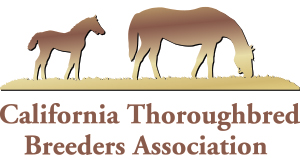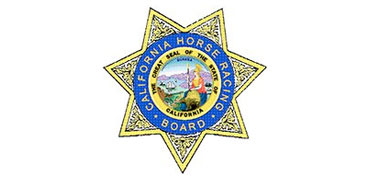From CHRB
ARCADIA, Calif. (Mar. 29, 2019) – The California Horse Racing Board conducted its regular meeting Thursday, March 28, at Santa Anita Park. Chairman Chuck Winner presided. Vice Chair Madeline Auerbach and Commissioners Dennis Alfieri, Fred Maas, and Alex Solis also were in attendance.
The audio of this entire Board meeting is available on the CHRB Website (www.chrb.ca.gov) under the Webcast link. In brief:
· The Board voted unanimously to prohibit the use of the riding crop (whip) for any purpose other than for the safety of the horse and/or rider when such use becomes necessary to control the horse. Improper use of the riding crop could result in the jockey being fined and/or suspended and/or the possible forfeiture of his or her share of the purse. The proposed regulatory amendment must now go out for 45-day public comment. Any comments and information received during the comment period will be considered when the matter comes back to the Board for a final vote.
· The Board immediately suspended authorization of thresholds for steroidal and nonsteroidal anti-inflammatory medications in post-race samples collected at Santa Anita Park and Golden Gate Fields. This means veterinarians and trainers will need to stop the administration of those medicines well before the horse races, so that the medications will have cleared the horse’s system. This applies to phenylbutazone (commonly known as bute), flunixin, ketoprofen, corticosteroids, and several other medications. The Official Veterinarians and Equine Medical Director are working closely with practicing veterinarians to provide information on withdrawal times for those medications based on international recommendations and other sources. The Board will consider extending these restrictions to other racetracks in California at the April meeting.
· The Board authorized racing secretaries at Santa Anita and Golden Gate to include as a condition of races a restriction on the amount of anti-bleeding medication (Lasix/furosemide) that can be administered to horses on the day they race to 250mg maximum dosage. This is consistent with previous CHRB restrictions.
· The Board also authorized racing secretaries at Santa Anita and Golden Gate to include as a condition of races that a horse is ineligible to race if it has received an intra-articular treatment within 14 days of racing. Racetrack personnel are responsible for monitoring and enforcing this restriction.
· After hearing a report from management at Santa Anita on steps they have taken to prevent equine injuries and fatalities, including extensive renovation and continuing inspections of the racing and training surfaces, Chairman Winner referred the item to the Medication and Track Safety Committee for further discussion and evaluation.
· Executive Director Rick Baedeker reported that the Medication Committee will address several other important issues at its next meeting on April 17, including the possible extension of medication restrictions in races to morning exercises, a discussion of bisphosphonates, requiring trainers to keep accurate records of all administrations of medications and to make those records available to authorities, and mandating that trainers and veterinarians participate in the CHRB necropsy review program.
· The Board took steps to streamline the process for transferring races to another track if the originally licensed track becomes unsuitable for racing, provided the owners/operators of the original track and the newly designated track are in agreement.
· The Board approved the license for the Firehouse Bar and Restaurant in Bakersfield to continue accepting wagers on horse racing as a mini-satellite.
· The Board authorized the California Authority of Racing Fairs to consider the 2019 allocated race dates at the Alameda County Fair, California State Fair, Humboldt County Fair, and Big Fresno Fair as one continuous meet solely for the purpose of carrying over certain wagering jackpots from one location to another.


